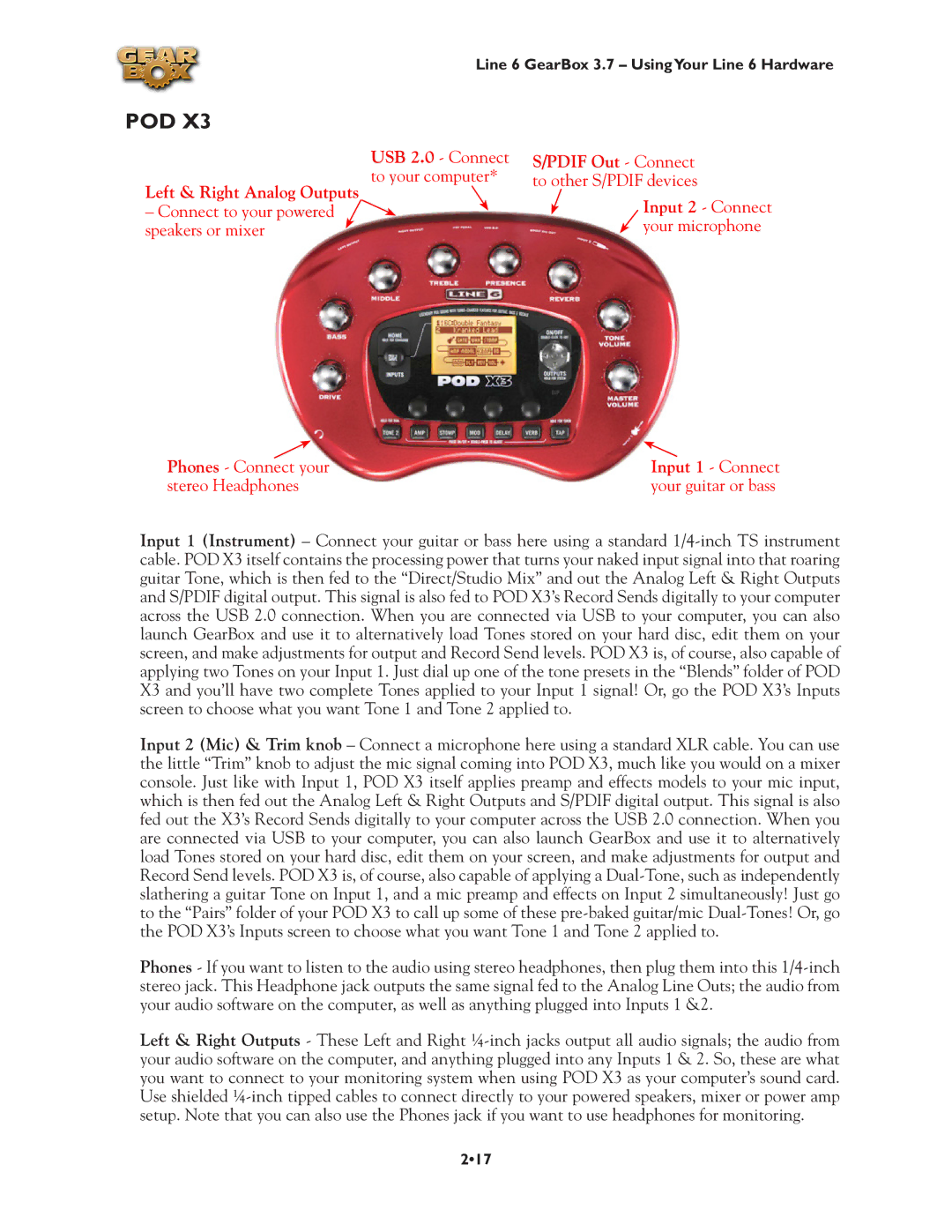
Line 6 GearBox 3.7 – UsingYour Line 6 Hardware
POD X3
Left & Right Analog Outputs
– Connect to your powered speakers or mixer
USB 2.0 - Connect | S/PDIF Out - Connect |
|
to your computer* | to other S/PDIF devices |
|
| Input 2 | - Connect |
| your microphone | |
Phones - Connect your | Input 1 - Connect |
stereo Headphones | your guitar or bass |
Input 1 (Instrument) – Connect your guitar or bass here using a standard
Input 2 (Mic) & Trim knob – Connect a microphone here using a standard XLR cable. You can use the little “Trim” knob to adjust the mic signal coming into POD X3, much like you would on a mixer console. Just like with Input 1, POD X3 itself applies preamp and effects models to your mic input, which is then fed out the Analog Left & Right Outputs and S/PDIF digital output. This signal is also fed out the X3’s Record Sends digitally to your computer across the USB 2.0 connection. When you are connected via USB to your computer, you can also launch GearBox and use it to alternatively load Tones stored on your hard disc, edit them on your screen, and make adjustments for output and Record Send levels. POD X3 is, of course, also capable of applying a
Phones - If you want to listen to the audio using stereo headphones, then plug them into this
Left & Right Outputs - These Left and Right
2•17
